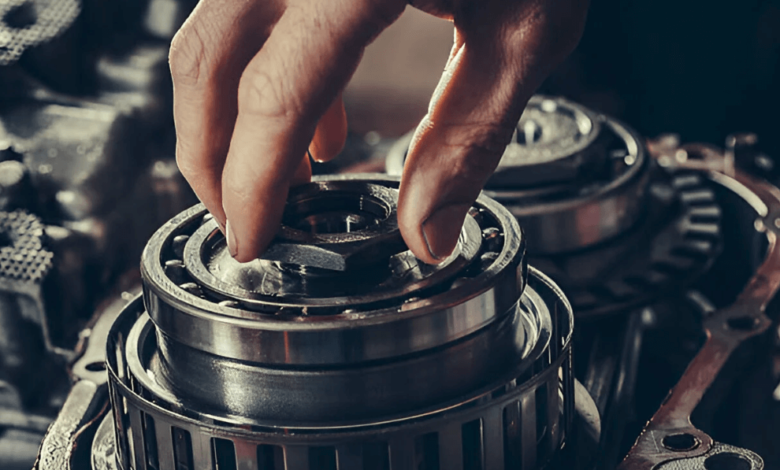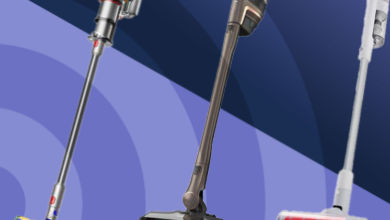Understanding Bearing Load

Bearings help machines run smoothly and last longer, whether in small devices or big turbines. “bearing load” means how much weight or force a bearing can handle. Knowing this helps machines work better and last longer.
This blog post explores the importance of bearing load, its types, how to calculate it, and tips for choosing the right bearings. Whether you’re an engineer or just curious about how machines work, this guide will help you understand bearings better.
Why Understanding Bearing Load Is Important
Understanding bearing load is key to improving bearing and machinery performance, reliability, and lifespan. It helps you to:
Affects Performance and Lifespan
The type and amount of load on a bearing—whether sideways (radial) or along the shaft (axial)—directly impact how well it works and how long it lasts. Too much load causes wear, overheating, or failure, while too little load can waste its capacity.
Helps Choose the Right Bearing
Different bearings are made to handle different loads. For example, angular contact bearings are good for axial loads, while deep groove ball bearings suit radial loads. Picking the right one avoids overload and improves performance.
Influences How Stress Is Spread
How the load is applied affects the force distribution inside the bearing. Uneven loads create high-stress spots, which can lead to damage. Knowing this helps design systems to reduce these risks.
Guides Bearing Life Estimates
Engineers use load data to calculate bearing life, with the L10 method estimating when 90% of bearings will still perform reliably for better maintenance planning.
Prevents Damage from Overloading
Properly managing bearing loads prevents permanent damage such as brinelling, reduces wear, and maintains operational efficiency.
Supports Maintenance and Troubleshooting
Knowing the load on bearings helps detect problems early and directs proper maintenance steps, ensuring longer bearing life and better performance.
Understanding bearing load is key to ensuring safe, reliable, and cost-effective mechanical systems.
See also: Why BTC Price is So Volatile and How to Navigate It
Types of Bearing Loads
Bearings support loads and reduce friction in mechanical systems. Choosing the right bearing depends on understanding the types of loads it will face:
Radial Load:
A force that acts perpendicular to the shaft axis, such as the weight of rotating shafts or gears pressing down on the shaft. Bearings designed to handle radial loads effectively include deep groove ball bearings and roller bearings.
Axial Load (Thrust Load):
A force that acts along the shaft’s axis, either pushing or pulling in line with the shaft. This type of load is common in gears or thrust washers. Bearings specifically designed to handle axial loads include thrust ball bearings and tapered roller thrust bearings.
Combined Load:
A combined load happens when both radial (side) and axial (lengthwise) forces act on a bearing at the same time. This occurs in parts like car wheel hubs and machine spindles. Bearings like angular contact ball bearings and tapered roller bearings are built to handle these mixed forces effectively.
Preload:
Preload applies a specific axial load to eliminate internal looseness in bearings, enhancing stiffness and accuracy. It is commonly used in precision machinery with angular contact or tapered roller bearings.
Centrifugal Load:
The outward force is caused by bearing rotation, especially in high-speed equipment like turbines. This affects bearing geometry and lubrication.
Choosing the right bearing for these loads ensures improved machinery reliability and efficiency.
Choosing the Right Bearing
Selecting the right bearing is key to ensuring your machinery runs efficiently and lasts longer. Follow these steps:
Understand Load Conditions:
Identify the type and direction of loads—radial (side), axial (along the shaft), or combined—to pick a bearing that can handle them.
Consider Speed and Temperature:
Choose bearings suitable for your machine’s operating speed and temperature range to ensure reliable performance.
Assess Precision and Rigidity:
Select high-precision, preloaded bearings for applications needing greater accuracy and stiffness.
Pick the Bearing Type:
Ball bearings for light to moderate loads
Roller bearings for heavier radial loads
Angular contact bearings for combined loads and high speeds
Thrust bearings for axial loads
Estimate Service Life and Maintenance:
Select bearings designed to meet your expected service life and allow easy maintenance to minimize downtime.
Factor in Environmental Conditions:
Consider exposure to dust, moisture, chemicals, and select seals or corrosion-resistant materials accordingly.
Use Manufacturer Tools:
Use bearing guides and online tools from manufacturers to help you pick the right bearings correctly.
Evaluating these factors ensures the right bearing choice for improved performance and longer equipment life.
Best Practices for Bearing Load Management
Managing bearing loads effectively boosts machinery performance, reliability, and lifespan.
Ensure Even Load Distribution
Bearings must carry the load evenly to avoid excessive wear on one side.
Use the right bearing type for the application (e.g., ball bearings for light loads, and roller bearings for heavier loads).
Align shafts properly to prevent tilting and uneven pressure.
Mount bearings correctly using proper tools and methods to avoid introducing stress.
Why it matters:
Uneven loads cause premature failure, overheating, and noise. Even distribution ensures smooth rotation and longer service life.
Apply Correct Bearing Preload
Preload is the internal load applied to a bearing during installation.
Use factory-set preload or spring mechanisms to maintain a stable load.
Prevent excessive preload to reduce the risk of overheating and premature wear.
Avoid too little preload, which can lead to vibration and noise.
Why it matters:
Proper preload increases stiffness, reduces vibration, and keeps rolling elements in contact with the raceways for smooth operation.
Monitor Operating Conditions
Track the environment and performance of bearings.
Watch for temperature spikes, contamination, or excessive vibration.
Monitor with tools to detect early signs of problems.
Why it matters:
A machine’s changing operation signals problems before it breaks down. Detecting these early saves time and repair costs.
Maintain Regular Lubrication
Lubrication reduces friction and wear inside bearings.
Use the right type of lubricant (grease or oil) for the specific bearing and load.
Follow a set schedule to replenish lubricant before it degrades.
Avoid mixing different greases, which can cause breakdown and reduced protection.
Why it matters:
Proper lubrication prevents overheating, corrosion, and damage, helping the bearing run smoothly and last longer.
Use Predictive Maintenance
Predictive techniques help detect issues before they become serious.
Use vibration analysis to identify imbalances or misalignment.
Measure temperature trends to catch overheating.
Apply acoustic monitoring to hear changes in bearing noise that indicate wear.
Why it matters:
Predictive maintenance enables teams to plan downtime and perform early repairs, preventing sudden breakdowns and costly interruptions.
Train Personnel
Ensure all technicians and operators understand best practices.
Teach proper handling, installation, and maintenance.
Emphasize the importance of cleanliness and precision in bearing work.
Why it matters:
Training staff reduces human error, lowering bearing failures and improving maintenance.
Following these steps helps extend bearing life, reduce failures, and optimize equipment efficiency.




